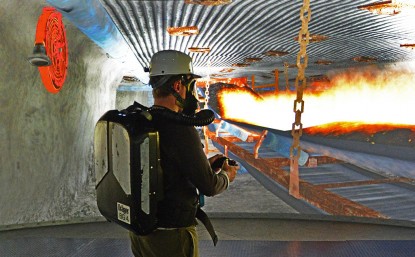
Safety training is an integral part of a number of different jobs in a variety of fields like healthcare, the oil and gas industry and forestry, to name a few. Safety training is also a paramount concern in the mining industry, where one wrong move can cost the lives of dozens of miners and those working above ground, or cause a disastrous natural gas leak or explosion.
Mining is one of the oldest professions on earth and dates back to some of the earliest civilizations, like the Egyptian and Mayan empires, and yet the resource industry still does not have global safety standards.
We’ve all seen just how dangerous underground mining can be. In 2010, Chile made worldwide headlines when 33 miners were trapped underground for 69 days. The men were freed after their two month long ordeal, but many others have not been so lucky.
One of the most dangerous places for mining is the African nation of Congo. Nearly two million people in that region depend on small-scale, artisanal mining to provide daily necessities for themselves and their families. During the last five years, over 150 occupational health and safety incidents have been reported to the Congo’s only internationally recognized accountability agency.
In 2014, a leading international development organization and a global mobile technology company partnered to improve health and safety throughout Congolese mines. “We are actively working on the ground to make a difference, training artisanal miners and building a safety culture among workers, site owners and financiers,” wrote Mark Viso of Devex.
The merger of the tech sector and the mining industry is helping to foster revolutionary changes across the mining sector. Mobile technologies can relay immediate safety updates and concerns, and there’s little doubt that mobile technology will continue to increase the level of safety in the resource industry.
In 2011, Caterpillar introduced new software called Intelligent Mine Management to help manage the safety of mines. “Each of the capability sets has its own functionality and feature set, but they are designed to be flexible and scalable,” Said Caterpillar’s commercial manager Annette Slyman. “Each mine can define its own needs, and add capability sets as required.”
Lisa Overholt, a Toronto-based business professional with more than a decade of experience in instructional design and training, believes the merger of the tech and mining sectors is positive news when it comes to health and safety training. “Not only do these technologies enhance the safety of the environment inside the mine,” Lisa Overholt comments. “[These technologies] also offer an interactive tool that provides exact and regularly updated locations of dangerous or problematic areas [within the mine site].”
While technological advances are always exciting, Lisa Overholt also adds a caveat to her enthusiasm. She points out that technology will not replace instructor-led training initiatives, especially when it comes to implementing effective mine safety standards. “These new technologies are meant to compliment rigorous training, not replace it,” she adds.
Health and safety training is not only a preventative measure — it’s also an educational opportunity. “Informing new miners on work related injuries, how to report accidents and how to monitor their own health inside and outside of the mine is also key,” Overholt adds.
Technology aids the exploration, feasibility and production stages of mines, and yes, technology can also make mining a safer industry. But, as executive Lisa Overholt points out, nothing compares to a traditional health and safety training program.

1. As I write this update, US stock markets have already given up all of yesterday’s gains this morning. To make an already-bad situation worse, “Quadruple Witching Hour” occurs on Friday.
2. Individual stock options, stock futures, stock indexes and stock index futures all expire then, and this expiry could ignite a new wave of panic selling.
3. Please click here now. The volume on this daily chart of the Dow is very bearish. It’s surging on declines, while drying up on rallies.
4. For a closer look at this morning’s action, please click here now. That’s the hourly bars chart, using December futures. There’s a head and shoulders top pattern in play.
5. The Fed’s QE program fostered the growth of government size and power, while causing banks to hoard capital, rather than loaning it out to businesses.
6. QE also caused US companies to borrow money and engage in stock buybacks. This created phoney PE ratios, and made the market look less overvalued than it was, and is.
7. With low rates, banks have no incentive to make loans, and government has massive incentive to borrow money and expand itself. The bottom line: The stock market and the government are not the US economy, but QE and low rates make it appear that they are.
8. In my professional opinion, the Western gold community needs to stop cheering for deflationary QE and deflationary rate cuts, and start thanking Janet Yellen for her taper, and for her upcoming rate hikes.
9. Those rate hikes will increase money supply velocity, cause inflation, and significantly boost gold prices.
10. Please click here now. UBS bank economists just presented a highly rational view of gold to their clients. Their statements feel “solid”, and that’s appealing to institutional investors.
11. UBS bank can move significant client risk capital with their research reports, and this one is great news for gold price enthusiasts around the world.
12. Also, I expect the new and fully transparent PBOC gold buy program to become a “game changer” for most gold market fundamentalists in the coming months. When bank economists begin focusing on the PBOC buying, that will bring even more institutional money into gold.
13. Please click here now. Gold stocks tend to lead gold, and this daily chart suggests that GDX is poised to leap upwards, above a key downtrend line.
14. A GDX breakout would likely usher in an acceleration of the current gold market rally, and my key 14,7,7 series Stochastics oscillator suggests that the breakout will happen.
15. When will the breakout happen? For the possible answer, please click here now. The next COMEX gold option expiry date is Thursday.
16. Gold has a tendency to lose upside momentum in front of expiry days, and then rally after the options expire.
17. Please click here now. That’s the daily chart for gold. While the technical picture looks solid, a decline to the minor support zone at $1115 – $1125 ahead of options expiry day is likely.
18. From there, I expect the US dollar to run into serious trouble against the yen, and create a surge of FOREX liquidity into both the yen and gold.
19. On that note, please click here now. That’s the daily chart of the dollar versus the yen. The uptrend line is broken, my Stochastics oscillator is verging on a sell signal, and there’s a nasty symmetrical triangle pattern in play. The implications for the dollar are clearly bearish, and that’s good news for gold.
20. Janet Yellen spoke several months ago about the “waning effects” of the rising dollar, and my technical analysis suggests her outlook was very timely.For another look at that key dollar versus yen chart, please click here now. There’s a double top pattern in play, with major implications for downside price action in the dollar.
21. Please click here now. President Xi Jinping looks and acts like a “Golden Terminator”, and I want to remind the Western gold community that a large part of his reform include the internationalization of the yuan.
22. On that note, please click here now. This key policy paper from PBOC official Dr. Yao Yudong is arguably the most important paper published about central banking and gold in decades. Gold is clearly going to play a very transparent and official role in the reformation of China’s currency, and ultimately in the entire global financial system.
23. Like an arrow shot by a “bull era” archer, Dr. Yudong’s roadmap for gold and the yuan can’t be taken back. Both China and India want to see global gold price discovery less pinned to things like Thursday’s COMEX option expiry, and more to gold jewellery demand versus mine supply. They’re taking the steps to make this “reformation” of the world’s ultimate asset a wonderful reality. Good times await the Western gold community in the coming years, and the dollar versus yen chart suggests the good times may begin… in just a few days!
Stewart Thomson of Graceland Updates, Guest Contributor to MiningFeeds.com
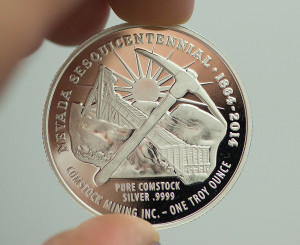
The following interview of Corrado De Gasperis, President, CEO & Director of Comstock Mining was conducted by phone and email in the week ended September 18th. The views, opinions and reported facts are entirely those of Corrado De Gasperis. The interviewer, Peter Epstein, CFA, MBA of http://EpsteinResearch.com believes that the material herein is accurate, but can make no assurances. For further information about the investment opportunity in Comstock’s stock, please contact Peter Epstein, epstein.peter4@gmail.com.
I will start with the obligatory question, can you please tell readers about Comstock Mining?
Comstock Mining (NYSE: LODE) has accumulated an unprecedented, ten square mile land position, consolidating an historic, world-class gold and silver district. We rezoned the property, identified millions of NI 43-101 compliant ounces of gold & silver, permitted and built facilities with substantial capacity, and placed our first low-cost mine into production. We are drilling in our Lucerne and Dayton Resource Areas with the objective of developing two new mines in Nevada and generating strong cash flow growth in one of the best mining jurisdictions in the world. [Note: Comstock’s recently enhanced website provides a wealth of information].
News of the Company’s rejuvenated capital structure was a hit, sending the stock up 58% on 15x average daily trading volume. Why is this transaction so important?
This is truly a watershed moment, opening the new Comstock Mining to a greater universe of investors. Our new capital structure eliminated all preferred stock, making it much cleaner and simpler. We now have common shares, cash and a modest amount of debt. We continue to enjoy a very high quality institutional shareholder base and have strengthened our Board’s independence.
Notwithstanding the above, Comstock Mining is perceived to be as a Company ALWAYS spending money, rarely cash flow positive, even when gold prices were higher. Can you please comment?
I appreciate that that perception is out there. The reality is that we consolidated a massive land position (100% owned or controlled), with little to no future royalties, rezoned it, successfully traversed significant environmental, social and operational obstacles, and sustainably re-positioned potentially one of the most prolific mining districts in the world back into operation. This was accomplished with a relatively small amount of capital considering the land we purchased, and the considerable logistical issues addressed. Now, we are positioned to commence development of two new mines. We hope to demonstrate solid growth in cash flow in one of the largest, high-grade properties in Nevada.
With less required explaining of the prior capital structure, and diminished funding concerns, what will you do with all of your free time?
We remain highly focused on drilling high-grade targets in Lucerne. We have positioned the mine to drill two high-grade targets and develop a drift and tunnel. We believe these two targets present the most immediate opportunity for stakeholders. We commenced an 800-foot drift development. We are targeting high-grade gold and silver structures with grades averaging 8x-10x that of what we’ve been mining. All of our painstaking work readies us to drill these targets with the objective of establishing a long-lived, profitable mining enterprise. The first phase of tunnel development began on September 5, 2015, and will continue for the next three months.
We are also drilling our Dayton area, a second deposit that we hope to be able to commence permitting on in 2016. Dayton is roughly a mile south of Lucerne.
Please comment on cost containment. Has there been a meaningful move in any parts of you cost profile?
These days, containing costs is synonymous with survival. We have dramatically streamlined and reduced mining, support and administrative costs. We have recently developed new partnerships with American Mining & Tunneling Inc. and American Drilling, moving a larger component of our cost structure from fixed to variable. This added flexibility should allow Comstock to continue delivering lower costs from existing infrastructure.
Can you comment on Mr. Winfield’s willingness to enter into this broad restructuring? Why now? Who are your pro forma largest shareholders?
Mr. Winfield remains our largest, and most supportive shareholder. These changes are a tremendous vote of confidence by him, and other shareholders, in our operating model and goals moving forward. The timing was right from every perspective. We’ve built the right team, grown our land position and proven the operating model and key economic variables (such as grade, metallurgy, strip ratios and costs). We are proud to include Century Asset Management, U.S. Global Investors, Sun Valley Master Gold Funds, Gabelli Asset Management, Loews Corporation, Solus Asset Management, and of course, the Winfield Group, in our top ten list of shareholders. They all supported the restructuring.
Do you believe that existing and new institutional shareholders will take another look at Comstock Mining after the revision of the capital structure?
Great question. It’s already happening and I’m confident that will prove to be one of the most significant results of cleaning up our capital structure. It’s important to reiterate that we didn’t just eliminate the preferred stock and dividends, but permanently dispensed with tens of millions of dollars of future obligations and royalties. We have already spoken with dozens of funds that are more interested in investing, calling us for meetings. I’m dedicated to responding and proudly explaining the new Comstock Mining in coming months.
In speaking with contacts and analysts, some believe that Comstock’s growth profile is limited, perhaps due to city boundaries?
The perception that we are limited is a dated one. Our contiguous land position is massive and last October we received unanimous approval from local regulators to expand our permit boundaries by almost tenfold. Our progress is only constrained by the rate at which we can develop these higher-grade targets. I should add we have drilled on less than 1 mile of our 6-mile strike, and if one considers depth, we’ve probably drilled on less than 2-3%.

Presumably, you believe that being in production is a world apart from, “in production soon…” Please comment on possible lessons learned?
Production is MORE than a world apart from a stage of, “advanced development” or “in production soon.” Lead times for obtaining permits, funding and building infrastructure are measured in years not months. There’s also a huge difference between commencing production and working out the slew of unexpected issues resulting in a ramp up period much longer than management and investors expect. We have three years of continuously improving production. We continue to improve but with the majority of our growing pains behind us. We are pouring gold and silver every week, while maintaining a low-cost profile, despite operating at a small percentage of our capacity.
More importantly, our Lucerne resource area is fully permitted. This achievement is invaluable as we transition to drilling multiple, higher-grade targets with the objective over time of developing long-lived mines. Our flexibility and experience should allow for faster exploration and permitting, possibly culminating in a faster development cycle. This knowledge will be incredibly useful as we start planning activities in the Dayton and Spring Valley drill targets.
Lessons learned? It is critically important to focus on one development at a time, prudently dedicating resources through completion of each objective. For example, ensuring the lowest possible operating costs at Lucerne and maintaining a strong balance sheet. As we see other Nevada mines failing, it appears that they have taken shortcuts, under-appreciated ongoing risks and contingencies, while working with inflexible project schedules. No surprise, but attacking low-grade opportunities with higher costs, bloated overhead, excessive debt or multi-tasking projects doesn’t work well with gold at $1,100/oz!
Is Comstock a Takeout Candidate?
We believe we have built a platform for Nevada-based growth. We have the management, district and network to lead that growth, both organically and through Nevada-based acquisitions. We are attractive to investors and I’m sure once they understand what has been built, land owned, obstacles cleared, absence of royalties and most importantly, the extent of the known geology. As suitors better understand our known and blue-sky potential, we expect they will certainly take notice. Some already have.
Why invest in Comstock now instead off waiting for a higher price of gold & silver?
There are a small number of junior, mid-tier and major producers demonstrating low cash costs (critical in a downturn). Low capital and all-in sustaining costs (critical longer term) and clean balance sheets. These will be the winners, representing companies that investors should consider investing in. Waiting means possibly paying more as many risks have been mitigated. For those of us emerging safely through this downturn, there will be far fewer names to choose from. Comstock Mining will certainly be one of them.
I believe our position among surviving Nevada-based companies will continue to improve as we execute on our underground portal in the Lucerne mine and develop Dayton, our 2nd target. We will be drilling and hopefully developing even higher-grade targets. The winners are those of us that have continued advancing, slashed costs and increased operating flexibility.
Some believe that Comstock has too much corporate overhead, perhaps too many senior people. Please comment.
Yes, we’ve been asked about that. Our system was designed to handle complexities beyond the norm. With hindsight, our challenges have become one of our strongest assets. We streamlined core competencies in areas where we’ve achieved reliability. Our corporate costs have come down in line with peer Nevada-based miners, better enabling us to while achieve our growth goals.
What are 3 key takeaways that you believe make an investment in the new Comstock Mining a good bet?
Nevada-based, massive consolidated land holdings, permitted for gold and silver and continuous exploration and development.
Existing infrastructure delivering a low and flexible operating cost, enabling success even in low gold and silver price scenarios and positioned to thrive at higher prices.
Vast exploration potential on six miles of contiguous, mineralized strike in one of the historically highest grade, world-class mining districts.
Thank you Corrado for you valuable time. I believe you articulate the New & Improved Comstock Mining well.
Readers should consider visiting the latest CEO Blog entry.
Disclosure: Comstock mining has a small market cap. Small market cap stocks are highly speculative, not suitable for all investors. I, Peter Epstein, own shares of Comstock Mining [LODE] purchased in the open market. Mr. Epstein, CFA, MBA is not a licensed financial advisor. Readers should take that fact into careful consideration before buying or selling any stocks.
Readers are encouraged to consult with their own investment advisors before buying or selling any stock, especially speculative ones like Comstock Mining. At the time that this article was posted, Comstock Mining was a sponsor of: http://EpsteinResearch.com. Please consider visiting: http://EpsteinResearch.com for free updates on Comstock Mining and others across a range of sectors. While at http://EpsteinResearch.com, please enter an email for instant delivery of my work. Thank you for supporting my articles & interviews.

Mining is one of the oldest and most dangerous professions on the planet. Due to the danger involved in mining, the industry as a whole has never been quick to embrace change. However, recent reports indicate that mobile technology innovations are helping to transform the current state of mining for the better. Mining mobile technologies are improving health and safety, while boosting productivity, by changing how people work in mines and particularly by improving communications.
Earlier this year, the Mining Global website forecast the growing collaborations between startups and mining companies. “Mining companies need to look for new ways to leverage new tech to remain innovative and agile in a changing market,” the mining resource stated. “Like other industries, the mining sector is beginning to look at ways to leverage and learn from new entrants in the field to remain competitive and cost-effective.”
A report from the Economist’s Intelligence Unit entitled ‘The Canary in the Mine’ touted the many benefits technological innovation can be present to the mining sector and how companies that have integrated mobile technologies are reaping the benefits. “The increasing use of devices such as handhelds, laptops and tablets is promoting the automation of work processes, speeding maintenance, aiding inspections and providing workers with step-by step procedures that are designed to maximize production and prevent accidents,” the report noted.
The report also concluded that 74 percent of mining executives believe the introduction of the technology has saved lives. 84 percent have seen an improvement in health and safety after adopting mobile technologies; they have also increased productivity by limiting the number of costly production stoppages and by speeding inspections and maintenance, proving mobile technologies do have a place in the mining sector.
Riva Richmond, the editor of the report, points out that mobile technologies have been shied away from in the past because the mining sector is such a dangerous environment. “But it is because it is so hazardous that they have so much to gain. Where they have been introduced, we have seen a safer and more productive workforce – and this is starting to win people over,” she wrote.
Last year, the Australian-based Resources Innovation through Information Technology (RIIT) organization held a 54-hour hackathon in an attempt to answer the real industry challenges of major mining firms. The hackathon was part of a larger initiative undertaken by RIIT aimed at helping to create 10 resource sector focused startups a year. Newton Labs was the winner of the 2014 hackathon. The startup designed an innovative prototype to detect large boulders in hard-rock mining operations, which can cost the industry millions in lost time.
Philip Thomas Mesman, an app developer and tech consultant in Oakville, Ontario and founder of PT Techconsulting, has been working with some resource companies to bring innovation to the mining sector. “It has been proven that companies that have invested in technologies, such as remote mining, autonomous equipment and driverless trucks and trains, have reduced expenses, while simultaneously driving up productivity,” Mesman said.
Mobile innovations aren’t only good for the bottom line, they are also helping to keep miners safe. “Above-ground mobile technology can alert supervisors and management of cave-ins, air supply breaches and other health concerns before any miners descend,” Philip Thomas Mesman added. “By connecting with underground sensors, mobile devices are also able to remotely alert operators to hazardous levels of gases and dust that can cause explosions or endanger the lives of miners.”
The tech consultant is also quick to point out how these applications can be enhanced and used in the years to come. “Some speculate the future of mining is to one day go galactic, and in that case mobile technologies will be especially necessary to monitor mines on other planets,” said Philip Thomas Mesman.
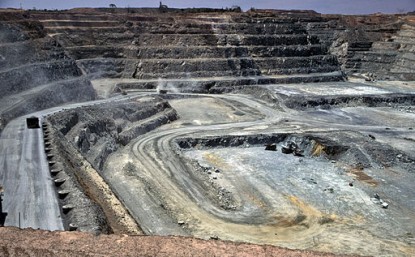
Gold is seen by many to be the premier safe haven to invest in when times are tough. Following the global economic meltdown in 2008, the price of gold rose steadily as more investors protected their investments by buying gold. The price hit an all time high of $1895 per troy ounce in September 2011, but since then has been on a downward trend, recently returning to levels not seen since 2010. We will look at the cause of the price falls and examine whether this is likely to change anytime soon.
There are several drivers for the price of gold – the strength of the US dollar, investor sentiment, the general price of other commodities, other precious metals and of course supply and demand.
US dollar
It is received wisdom that the gold price moves opposite to the US dollar. Therefore when the dollar is strong the price of gold is weak and vice versa. When you compare the movement of the USD/EUR rate with the price of gold we can see this in effect. With gold commonly traded in dollars, when the dollar is strong you can buy more gold for your dollar, making it cheaper in real terms. Consequently, the drivers for the US dollar – US economic confidence, the price of oil etc, can also play an important part in the price of gold. Much of the advice for investors will be to examine what is happening in the US economy. If the interest rate falls, the unemployment rate rises, quantitative easing is continued or stopped and so forth can all affect the price of gold in the short term.

Investor sentiment and the economy
In the longer term though, a wider picture needs to be viewed. The US economy can affect the dollar, but so can the global economy and in turn investor sentiment. As mentioned earlier gold is seen as a safe haven to invest in and when there is concern over the global economy, investors will turn to gold rather than riskier agricultural commodities such as coffee or sugar that are dependent on weather for the success or failure of their crops. With the current problems with the Chinese economy and the onset of the El Nino weather phenomenon, which could adversely affect many agricultural commodities, it would seem that the price of gold should stabilise or rise.
The commodity factor
That’s not likely to be the case though, because after several years of record crops and the fall in the price of crude oil, the commodities markets are generally very low. For investors, that would mean that the balance of risks and gains is tempting and therefore gold is not necessarily top of their investment lists. Although, it is thought that agricultural commodities are likely to rise in the coming year, they are not expected to rise as high as the peaks of 2011/12 when poor crops in major producing regions caused a number of traded commodities to hit new highs. At the same time the gold price rose as investors “jumped ship” from agricultural commodities to safer bets.
Silver, platinum and the other metals
The other precious metals also have a bearing on the price of gold, and gold can have a bearing on the price of other precious metals. The investor choice aside, silver, platinum, and rhodium are all attractive consumer desired metals and the price of these can affect the mix of metals used in jewellery. In some industrial situations, gold is the preferred choice, but when the price is high, alternatives with similar corrosion resistant and conductive properties are looked for. Although, there is no perfect substitute as yet, nickel, copper, palladium and platinum can be utilised to reduce the amount of gold used in electronics (the main industrial use of gold). The reduction or increase in the use of gold will usually result in the opposite effect in the other metals. However it should be noted that industrial uses account for only about 10% of the total use of gold, and so the effect can be quite minor.
Supply and demand
Linking all of these factors is the supply and demand of gold. The demand for jewellery is linked to the economy and the strength of the dollar. In recent years the greatest demand has been from China and India as both cultures prize gold highly and the population’s disposable income has grown. The recent fall in economic outlook for China will certainly impact the demand for gold. In 2014, the total demand for gold fell by 5% y-o-y to 4,242 tonnes, the lowest level since 2010. Provisional figures for 2015 show demand to be falling further.
When the price of gold is high, it becomes economical for more marginal gold reserves to be mined. New high grade gold deposits are becoming harder and harder to find, and consequently more expensive. As the price of gold was so high between 2011 and 2013, more investment was made in gold mining and consequently the supply of gold rose. The high price of gold also meant that more gold was recycled over the period 2008 to 2011 with a 70% increase from 2008 until 2014. While the amount of gold recycled in 2014 fell back to 2008 levels, the amount of mined gold has continued to rise. In 2014, the amount of mined gold supply was 3,234 tonnes, up 60% from 2007’s level of 2,026 tonnes.
The higher supply and fall in demand has meant that there will be a surplus of gold in 2014 of 160 tonnes, compared to a deficit of 188 tonnes in 2013. It is estimated that the surplus will rise in 2015.
Conclusion
So what does this all mean for the price of gold now? The next thing to look out for will be the US Federal Open Market Committee’s decision on interest rates due on Thursday 17th September. The result of that decision will drive gold prices in the short term, but in the long term there seems to be no real respite from falling gold prices, with low commodity prices, low metal prices and low demand but higher production.
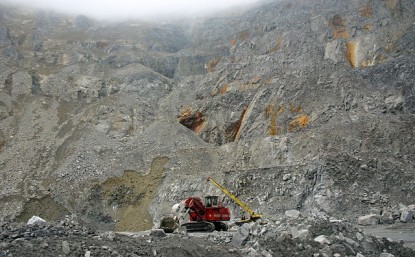
Summary
A)Investors generally return to the market after Labor Day from Summer Vacation. Trading volume picks up.
B)Investors are returning to an extremely volatile market where three digit moves have become the norm.
C)Precious metals and commodities come back into favor when searching for a safe haven for capital preservation.
D)Uncertainty on U.S. rate increase decision September 17th could lead to more major moves lower.
E)After a 7 year decline, precious metals, commodities and the junior miners may be the best place to be for the following 10 reasons.
As the summer comes to an end, investors return to their offices and trading volumes tend to pick up after Labor Day. I expect that many are realizing the markets have considerably changed since May. Global equity markets are all off led by the price decline in the S&P 500 which has broken its four year uptrend forming a technically bearish death cross. The name of the game right now is capital preservation and plunge protection. Look for rallies in equities such as the Dow to be short lived.
The Fed is expected to raise interest rates for the first time in many years on September 17th.
However, there is growing uncertainty that will not occur especially due to the recent equity market volatility. Many other major economies such as China are announcing stimulus plans to prevent a recession. As the global stock markets rolls over on fear of a U.S. Rate increase, it could boost the value in the beaten down precious metals and commodities as they may be seen as a safe haven to protect against a plunge and preserve capital. Here are ten reasons why I believe gold, silver, commodities and especially junior miners may be the best place to be over the next 3-5 years. The bottoming process for the juniors after a seven year decline may be ending in the next few months as they once again come back into favor for the following ten reasons.
1. Junior Miners are now even more cheaper than they were in the late nineties when gold was below $275 an ounce. This might be a once in a lifetime buying opportunity that may not last for much longer. The safest havens during periods of deleveraging are the assets already trading near liquidation levels.
2. The stock market and U.S. treasury market is extremely overvalued and has been going straight up for more than four years boosted artificially by quantitative easing and government stimulus. The odds for a bear market have been extreme for many months. Do not be surprised of a 30-50% possible decline as the momentum traders are automatically stopped out.
3. Many of the momentum and high frequency traders left precious metals and chased stocks higher over the past few years since 2011. That trend as evidenced by the Dow-
Gold Ratio may be changing. As soon as that upward trend in equities was broken we saw a massive shakeout.
4. The bear market in commodities really began during the U.S. credit crisis and has lasted close to seven years. This is one of the longer declines in terms of length duration. Over the years there has been a drastic reduction in mineral exploration and development due to investors chasing the latest fads in social media and biotech. This could create a major shortage of mineral supplies going forward over the next decade.
5. Precious metals and commodities provide diversification to stocks and bonds. One must have a portfolio of hard asset investments but they must be chosen wisely. One must be a good stock picker and investigate the management team that it has the best interest of shareholders in mind.
6. Investors may be nervous of credit risk and want tangible assets in the form of precious metals and commodities. The prices of hard assets unlike so many equities can’t disappear. Rising interest rates and a slowing economy could actually boost commodities as it did in the 1970′s.
7. The majority of investors are usually wrong and for the first time that I can ever remember there is a net short position on gold. Just like a few months ago I said don’t be surprised to see huge moves to the downside on U.S. bonds and equities, I also expect huge moves on the upside for gold. It may be extreme but I feel the headlines could change from “Record Down Day for The Dow” to “Largest Percentage Daily Increase in Gold Price” as investors once again seek out safe havens.
8. Mining stocks are trading at historically discounted valuation and generational lows. This could be one of the best contrarian opportunities of a lifetime especially for younger investors who have not yet positioned their portfolios to the sector. Look at the recent moves by Soros, Icahn and Drunkenmiller to increase exposure to commodities.
9. Quantitative easing should continue across the Globe to prevent deflation. It may not be successful. The Banks can print but they can’t make more commodities out of thin air.
10. The commodities relationship to stocks and financial assets is negatively correlated meaning they can go up when other assets deflate.

Last week, Tesla Motors announced that it had agreed in principle to an off-take agreement with Bacanora Minerals Ltd. (located in Sonora Mexico) and to a lesser extent, its joint venture partner, on a portion of their properties, Rare Earth Min. Since then, Bacanora’s stock is up approximately 40%. At first, I was surprised Bacanora’s stock didn’t soar even higher. It turns out that the off-take agreement has a number of contingencies and no financial commitment from Tesla. In fact, Tesla’s Elon Musk was quoted as saying, “this lithium deal is not exclusive (and) has many contingencies. The press on this matter is unwarranted.”
The point of the opening paragraph is not to marginalize the good fortune of Mexico’s Bacanora, they have certainly staked a coveted spot! Instead, I believe it has significant and important ramifications for lithium juniors in Nevada. There’s Dajin Resources [(DJI.V) & (DJIFF)] Pure Energy Minerals [(PE.V) & (HMGLF)] the proposed [Western Lithium / Lithium Americas] merger and of course the currently producing Rockwood Lithium
Clearly, more than one of the above will get the green light. In fact, I’m laying out a thesis that, over time, all existing Nevada lithium companies will be keenly sought after. I find it noteworthy that Tesla’s first move to secure lithium supply was choosing a company that remains years from production. To be fair, Bacanora is more advanced than Western Lithium, Dajin Resources and Pure Energy. However, the fact that Tesla is looking so far in advance and might soon announce deals in Nevada, is telling of Musk’s longer-term strategy. Remember, Musk believes, “the need for lower-cost batteries for autos and power storage means there will need to be hundreds of, “giga-factories…”

Can Long-Term End Users Avoid Tapping Every Viable Lithium Source?
If Tesla is largely confined to North America for his its raw materials, as is reported to be the case, Nevada is surely a great place to be. The State offers security of supply not just for Tesla, but for giga-factories sure to follow. There are not that many lithium juniors, except a dozen or two with little more than a potential deposit, in places like Serbia, with no cash or the ability to raise capital. Hope is not a strategy.
Tesla and others will need ALL of the lithium supply from any economic deposit in a known, safe jurisdiction like Nevada. It’s a question of when, not if, investors wake up to Nevada’s small cap lithium opportunities. Even companies in Nevada that might be 5 + years from production are still years ahead of green field prospects. Dajin Resources is an early-stage play, but it has invested capital, drilled holes, and staked some of the most prospective property in Nevada as well as in Argentina. Dajin has a committed shareholder base and the demonstrated ability to raise capital, including from the ongoing exercising of in-the-money warrants.
Yes, Dajin is an earlier stage play than Western Lithium and Pure Energy. However, there will be room for more than just one winner. Dajin controls almost 7,000 acres in Nevada and an enormous land position (roughly 250,000 acres) in Argentina. Investors in Dajin get a long-dated call option in Argentina for free. How large a holding is 250,000 acres? Lithium Americas controls about 200,000 acres, which was no doubt an attractive attribute to Western Lithium’s stakeholders. Although at early stage, in the long run will that matter if lithium demand explodes higher like Musk and others seem to believe? I think not.
The bottom line is that there are probably 10 or fewer pure-play, lithium juniors with a shot of reaching production, (there will be more joint ventures, farm-outs and takeovers). Therefore, green field explorers and higher-cost projects in Australia (and elsewhere) will never see the light of day. In my opinion, Musk tying up a portion of Bacanora’s output would not be a meaningful part of his aggressive long-term demand expectations. Bacanora might end up supplying just 10% (my guess) of its lithium output to Tesla’s first giga-factory. Security of supply means multiple sources for multiple end users.
Conclusion
Tesla and others to follow will demand consistent, high quality, on-time delivery from a wide range of sources. If Musk keeps to his pledge of obtaining raw materials solely from North America, he will likely be all over Nevada’s emerging production, timing unknown. Not to be lost in the analysis is that Musk not only wants to secure his own growing needs, but is likely to be searching for opportunities to thwart competition.
As soon as the likes of Buffet’s BYD, LG Chem, Panasonic, NEC, Samsung, Sanyo, etc. begin announcing off-take agreements, the world will see how critically important the 10 or fewer lithium hopefuls are. Dajin Resources is a favorite of mine, but not my only. There’s ample room for any and all lithium supply, especially secure supply, to meet demand for the next few decades. Yes, I’m bullish on lithium. Yes, I’m bullish on Dajin Resources.
Disclosures:
Several of the companies mentioned herein have small market caps, including Dajin Resources, Pure Energy, Western Lithium and Lithium Americas. Small cap stocks are speculative, not suitable for all investors. I, Peter Epstein, own shares of DJIFF and PE.V. Mr. Epstein, CFA, MBA is not a licensed financial advisor. Readers should take that fact into consideration before buying or selling any stock mentioned. Readers are encouraged to consult with their own investment advisors before buying or selling any stock, especially speculative ones such as Dajin Resources, Pure Energy, Western Lithium and Lithium Americas. Peter Epstein conducts a lot of articles and written interviews that are popular among readers. At the time that this article was posted, Dajin Resources and Pure Energy were sponsors of: http://EpsteinResearch.com. Please consider visiting: http://EpsteinResearch.com
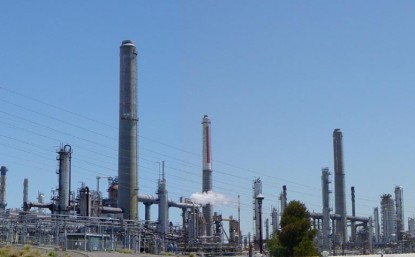
1. Welcome to September! Please click here now. That’s the daily Dow chart. In early morning futures market trading, the Dow is down about 330 points.
2. It’s a horrific start to the month, and it could get much worse. Here’s why: I think Janet Yellen might raise rates in September, regardless of the effects of a rate hike on the stock market.
3. Please click here now. That’s the daily CRB chart. A huge rally in oil is helping to push commodity indexes sharply higher.
4. Stan Fischer is the latest Fed official to publicly state that the Fed needs to anticipate inflation, because it could arrive sooner than most investors realize.
5. I’ve suggested that rate hikes themselves are inflationary, because they make bank loans more profitable, and more loans can reverse the implosion in money supply velocity.
6.Please click here now. That’s the daily oil chart. I find it “interesting” that MSM (mainstream media) seems to enjoy referring to commodity “bear markets”, when the price declines by 20%. When the price rises 20% or more, as it just did for oil, MSM is strangely reluctant to use the term “bull market”.
7.Oil has just surged almost 30% higher. If the US stock market rallied 30%, MSM would be using foghorns to announce a new “bull market”. Using MSM’s own 20% yardstick, oil is now clearly in a bull market. Regardless, I’m much more interested in the huge volume that has accompanied the rally. That’s bullish.
8. Also, I think the oil rally can continue, albeit after a sharp pullback, and I’m in very good company. Please click here now. Goldman Sachs analysts suggest that oil’s rally may only be just starting.
9. They suggest the rally could last for two months.
10. Please click here now. That’s the daily gold chart. Lower gold and CRB index prices are not music to the Fed’s ears. I like the price action.
11. There might be a bit of a scary sell-off in the days ahead. That could take gold down to the low end of the $1110 – $1125 support zone, which I’ve highlighted on the chart. Here’s why:
12. The next US jobs report will be released on Friday at 8:30 AM. Gold has a rough general tendency to decline ahead of the jobs report, and then stage a nice rally. Here’s the good news:
13. After Friday’s report is released, I think gold should make its way to the $1200 area, without too much trouble.
14. I often refer to Indian gold jewellers and their clients as the world’s “titans of ton”. They have become pretty quiet after the violent $100 rally in the gold price, but I think they will be back on the buy-side in a big way, very soon.
15. What would happen if Janet raised rates in September? Well, in recent years stock market swoons have been accompanied by a rush into T-bonds. It’s hard to know exactly how a rate hike would play out for gold, but one thing is clear: Seasonal gold buying in India is inelastic.
16. The average citizen in India couldn’t care less if the Dow and T-bonds are crashing. Their buying is based on religion. That’s why it’s inelastic. With their huge gold demand in play during gold’s strong season, and a potential rate hike from Janet, US stock market investors might sell bonds as well as stocks, and try to go to cash money. Cash money can take various forms. It can be fiat, or hard currency. Gold is traded as a currency at most major bank FOREX departments.
17. Alan Greenspan has warned that rate hikes could cause an “exit door event”. In that scenario bond market selling begets more bond market selling, and both the US dollar (fiat cash) and gold (hard money) become the main safe havens.
18. It’s important to remember that America’s top corporate directors took out full page advertisements just before the stock market crashed in 1929. They proclaimed a “bull era” of prosperity and permanently rising stock prices.
19.They really believed that their “bull era for stocks” would unfold. Instead, what transpired was the worst economic and stock market meltdown in the history of America.
20. Investors in the Western gold community should be very wary about assuming that today’s bullish analysts are any smarter than their 1929 counterparts.
21. Also, if a gold community investor was very bearish on the Dow at the 2009 lows (I bought into those lows, and felt a lot of pain as I did), should they really be making wildly bullish US stock market statements now? The answer is of course: No.
22. Please click here now. That’s the SIL-NYSE ETF (silver stocks). Note the double bottom pattern in play. The left bottom is itself a small double bottom, and the same thing could happen with the right side.
23. Silver stocks, and silver itself, should dramatically outperform gold as US inflation approaches the 2% threshold level.
24.I think the rally that follows the jobs report, combined with Indian seasonal buying, could see SIL soar to trend line resistance in the $10 – $11.50 area! All minor weakness should be used to accumulate both gold and silver stocks before Friday’s jobs report is released. There’s no need to “back up the truck”, but there is a need to be a calm buyer now, to benefit from a potential rally of significant size!
Stewart Thomson of Graceland Updates, Guest Contributor to MiningFeeds.com
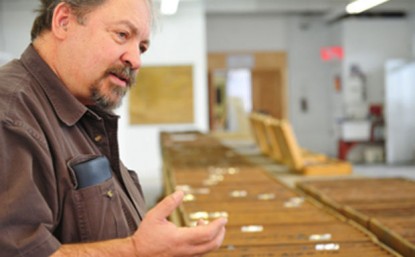
I’m in White Sulphur Springs, Montana today getting to know Tintina Resources’ (TSXV:TAU) Black Butte copper project.
Coincidentally, Tintina published a corporate update this morning. Tintina will submit the Mine Operating Permit application to the Montana Department of Environmental Quality later this year. Tintina expects a decision within two years.
The company also announced that it has postponed its Pre-Feasibility Study. Copper prices have been tanking of late, and since Tintina has two years ahead of it waiting for permitting, the company will likely be waiting for higher copper prices to complete the study. A full Feasibility Study will coincide with the Company seeking project financing.
Tintina also published a new corporate video which provides a history of the project. Watch below:
We are proud to have Tintina CEO Bruce Hooper as a presenting sponsor at the upcoming Subscriber Summit in Vancouver on October 8th.
The free event is almost fully booked so register now if you intend to be there.
More on Tintina here and check back next week for a report on my trip.
If you would like to receive our free newsletter via email, simply enter your email address below & click subscribe.
CONNECT WITH US
Tweets
Tweet with hash tag #miningfeeds or @miningfeeds and your tweets will be displayed across this site.
MOST ACTIVE MINING STOCKS
Daily Gainers
 Lincoln Minerals Limited Lincoln Minerals Limited |
LML.AX | +125.00% |
      |
GCR.AX | +33.33% |
      |
CASA.V | +30.00% |
      |
AHN.AX | +22.22% |
      |
ADD.AX | +22.22% |
      |
AZM.V | +21.98% |
      |
NSE.V | +21.05% |
      |
DYG.V | +18.42% |
      |
AAZ.V | +18.18% |
      |
GLA.AX | +17.65% |


 Follow us on Twitter
Follow us on Twitter Become our facebook fan
Become our facebook fan








